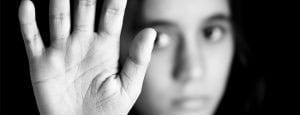People in China who are living with narcolepsy will soon have access to a new therapeutic option to help them manage cataplexy or excessive daytime sleepiness (EDS) after the Chinese National Medicinal Products Administration (NMPA) recently approved pitolisant (Wakix).
As first reported by Pharmaceutical Technology, pitolisant is the first approved narcolepsy therapy and the only non-scheduled narcolepsy drug available in China. Pitolisant, administered via a once-daily pill, is a histamine type 3 receptor (H3) antagonist and inverse agonist. An article published in the National Library of Medicine explains:
Narcolepsy is associated with a deficiency of hypothalamic cells producing orexin, a neuropeptide that acts as an excitatory neurotransmitter on neurons that produce wakefulness. H3 receptors are found in the central nervous system where histamine acts as excitatory neurotransmitter promoting wakefulness.
The drug was first approved in the United States in 2019 after studies found that it reduced excessive daytime sleepiness and episodes of cataplexy, or the sudden loss of muscle control.
Following the recent Chinese approval, many medical stakeholders are sharing their hope that pitolisant will offer a more accessible and cost-effective therapy for those in need.
Understanding Narcolepsy
Unfortunately, there are many myths and misconceptions about narcolepsy. Gaining a clearer understanding of what narcolepsy is and its impacts can aid us in raising awareness, furthering research, and creating a more inclusive world for those affected.
Narcolepsy is a chronic neurological disorder that alters the brain’s ability to regulate sleep-wake cycles. It can cause overwhelming drowsiness during the day (excessive daytime sleepiness) that makes it difficult to stay awake. Some people with narcolepsy may suddenly fall asleep for a few moments, minutes, or longer; others may experience hallucinations while asleep or when waking. Additionally, some people experience cataplexy which can be triggered by strong emotions, such as laughter. Because of the general lack of understanding, many people remain undiagnosed until years after their symptoms first appeared. Symptoms often appear between ages 10-30; outside of excessive daytime sleepiness and cataplexy, people may experience sleep paralysis, insomnia, or obstructive sleep apnea.
There are no cures for narcolepsy or cataplexy, but the conditions can be managed.







